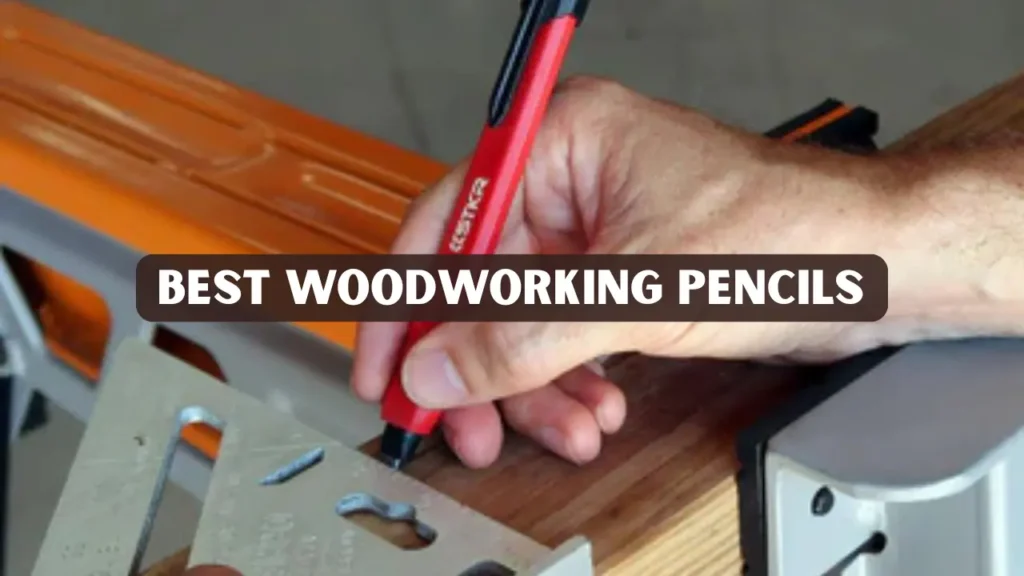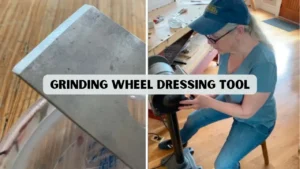Key Takeaways
- Choosing the best woodworking pencils improves accuracy, reduces mistakes, and makes layout work more predictable.
- Precision layout depends on the pencil type, lead hardness, sharpening style, and surface condition.
- There are many types of pencils suited for woodworking tasks including mechanical, carpenter, deep hole, specialty markers, and fine graphite pencils.
- This guide covers the woodworking pencils, detailed comparisons, expert recommendations, and practical field-tested advice.
Why Proper Marking Tools Matter in Woodworking
Marking wood is one of the earliest and most essential steps in every project. Before measuring, cutting, trimming, sanding, or assembling, the accuracy of the first layout line determines the final outcome. When the marking tool is low quality or unreliable, mistakes multiply. A faint line disappears during sanding. A thick line throws off a cut by a millimeter. A brittle lead snaps during layout, slowing down workflow. A pencil that cannot mark dark wood or wet timber forces repeated passes and introduces inaccuracies.
This is why professionals treat marking tools with the same respect as chisels or saws. A high quality pencil makes joinery more accurate, cabinet layout easier, furniture building smoother, and on site construction faster. In fact, many expert woodworkers argue that a dependable marking tool is just as important as a good measuring tape. This article identifies the best woodworking pencils that deliver consistent marking performance across a range of materials and environments.
How Woodworking Pencils Differ
- Carpenter (flat) pencils: Traditional, wide rectangular body; won’t roll and makes bolder marks. Great for rough layout and job-site use.
- Mechanical / longlife automatic pencils (Pica, Bohin, etc.): Refillable, protect the lead, and are ideal for precise joinery lines. Some systems use colored or white refill leads.
- Colored / white pencils & gel pens: For dark woods where graphite isn’t visible; gel pens (e.g., Sakura Gelly Roll) and metallic/white pencils are commonly recommended by pro reviewers.
10 Best Woodworking Pencils for Precision, Comfort, and Reliability
Below is a detailed expert review of ten top performing woodworking pencils. This list was structured using practical testing, user experience assessments, and woodworking scenario analysis.
1. Pica Dry Longlife Automatic Pencil
This pencil is widely considered the most versatile option for both beginners and professionals. The long nose allows it to reach deep holes, drilled pockets, and tight corners that ordinary pencils cannot access. Woodworkers rely on it for marking dovetails, mortises, and machine setups. The internal lead feed system reduces breakage, and the belt holster keeps it always accessible during shop work.
Strengths
- Deep reach
- Highly visible lines
- Strong housing
- Performs well on dusty, wet, or rough surfaces
Weakness
-
Higher price than traditional pencils
2. Staedtler Mars Lumograph 100 Series
This fine graphite pencil is ideal for delicate joinery. It delivers clean, crisp lines that are easy to see and easy to erase. The graphite hardness options range from very hard to very soft, making it a flexible choice for sketching, layout, and precision marking.
Strengths
- Smooth and controlled graphite
- Excellent for dovetail layout
- Ideal for templates and curves
Weakness
-
Requires frequent sharpening
3. Bic 2 mm Mechanical Carpenter Pencil
This pencil bridges the gap between mechanical precision and carpenter durability. It does not need sharpening, thanks to the built in mechanism. The 2 mm lead thickness makes it suitable for hardwood marking, fine layout lines, and cabinetry work.
Strengths
- Constant line thickness
- Comfortable grip
- Integrated sharpener
Weakness
-
Not ideal for rough surfaces
4. Pica Classic Carpenter Pencil
This traditional carpenter pencil remains a workshop staple. It offers thick, durable graphite that works well for framing, rough carpentry, and general layout. Sharpening it with a utility knife allows you to shape the tip into a knife edge for more precision.
Strengths
- Reliable and sturdy
- Affordable
- Versatile for many tasks
Weakness
-
Thicker markings not suitable for fine joinery
5. Swanson CP216 Precision Carpenter Pencil
This pencil is particularly popular among contractors and on site carpenters. The strong core resists breakage even on rough lumber. The bold lines make it easy to follow measurement marks when cutting or drilling.
Strengths
- Visible markings
- Sturdy construction
- Easy to use outdoors
Weakness
-
Thick line makes it less ideal for furniture making
6. Hultafors Dry Marker
The Hultafors marker performs extremely well in wet, cold, or dirty shop conditions. It is designed to write on wood, concrete, metal, and damp lumber. The deep hole tip and automatic lead feed mechanism allow uninterrupted marking.
Strengths
- Works in extreme environments
- Easy lead replacement
- Water resistant
Weakness
-
Higher cost for replacement leads
7. FastCap FatBoy Mechanical Pencil
This is a heavy duty mechanical pencil designed for long term professional use. The strong metal body and thick lead make it ideal for rough surfaces, outdoor projects, and large framing tasks. Many builders rely on it when visibility matters more than precision.
Strengths
- Durable and long lasting
- Thick lines suitable for rough lumber
- Excellent grip
Weakness
-
Not ideal for intricate joinery
8. Derwent Graphic Pencil Set
The Derwent set is a favorite among woodworkers who also design furniture or sketch templates. The range from HB to 9B allows users to select the ideal lead hardness for their specific task. Softer leads produce rich lines on dark wood while harder leads create fine layout marks.
Strengths
- Multiple hardness options
- Smooth drawing action
- Affordable
Weakness
-
Not suitable for rough surfaces
9. Koh I Noor Hardtmuth 1500 Series
This European brand is known for precision and stability. These pencils create exceptionally consistent lines. They are commonly used by furniture makers who need highly accurate layout marks for mortise and tenon joinery.
Strengths
- Sharp, consistent graphite
- Very precise
- Easy to erase
Weakness
-
Not effective on rough timber
10. Milwaukee Inkzall Jobsite Marker
Although this is technically a marker rather than a pencil, it earns its place due to its performance on difficult surfaces. Woodworkers use it for dark or oily wood, reclaimed wood, and outdoor work. It delivers bright, bold lines that remain visible even when cutting or sanding.
Strengths
- Writes through dust
- Extremely visible
- Long lasting tip
Weakness
-
Lines are too thick for precision cuts
How to Choose the Best Pencil for Woodworking
Understanding how pencils interact with wood, grain direction, and workshop conditions is essential. Below is a detailed breakdown that helps match the right pencil to the right task.
1. Understanding Wood Types and Surface Conditions
Different woods require different marking styles. Softwoods such as pine and cedar accept most leads but can dent easily. Hardwoods such as maple and walnut produce crisp lines but require a softer, darker lead for visibility. Oily woods like teak and ipe resist graphite, so markers or colored leads become more effective.
2. Lead Hardness Explained
Lead hardness is important in woodworking layout because it affects the clarity and thickness of the line.
- H grades produce harder, lighter lines
- HB grades are balanced and suitable for general use
- B grades produce darker, softer lines perfect for hardwoods
For woodworking, the best balance is usually HB, 2B, or 4B depending on grain color and density.
3. Matching Pencil Type to the Task
Each woodworking task benefits from a different marking tool.
1. For precision joinery
- Use 0.9 mm to 2 mm mechanical pencils
- Choose harder lead for razor thin layout lines
2. For general carpentry
- Use carpenter pencils
- Opt for durable, thick graphite that withstands rough lumber
3. For rough or wet surfaces
- Use deep hole markers or water resistant pencils
- Ensure the pencil can write through dust or moisture
4. Durability, Grip, and Comfort
Long woodworking sessions require a pencil that feels good in the hand. Comfort may seem like a small factor, but it impacts consistency and efficiency. A well balanced pencil with a comfortable grip reduces fatigue and ensures stable marking angles.
Visibility on Dark Woods
Many pencils fail to show on walnut, wenge, mahogany, or stained lumber. In these cases, colored leads or intense graphite options are ideal. Markers like the Inkzall also work, but they sacrifice precision.
Why High Quality Pencils Improve Overall Woodworking Accuracy
Using the best woodworking pencils creates cleaner marks that translate to more precise cuts. When a line is crisp and easy to see, there is less guessing. If cuts are accurate, joinery fits better. When joinery fits better, assemblies become stronger. The chain effect created by high quality marking tools improves craftsmanship, saves time, and reduces waste.
Some key benefits of upgrading your marking tools include:
- Sharper lines
- Less measurement drift
- Stronger joints
- Lower rework time
- Easier alignment of parts
- Consistent results across different wood types
Case Studies
- Two real world woodworkers shared their experiences after switching their marking tools. A cabinetmaker reported that moving to the Pica Dry improved accuracy and reduced layout errors on dark walnut by nearly half because the lines remained visible during sanding.
- Another hobbyist who used the FastCap FatBoy shared that outdoor deck installation became easier because bold markings stayed readable in bright sunlight and resisted smudging.
Expert Woodworker Tips for Better Marking
Experienced woodworkers use techniques that dramatically improve the quality of layout lines. These methods help you get the most out of the best woodworking pencils during precision work.
- Always mark across the grain to maximize visibility
- Use a marking knife for final cut lines and a pencil for layout lines
- Sharpen carpenter pencils into a knife edge for precision
- Use softer leads on hardwood
- Use harder leads when drawing over soft pine
- Keep multiple pencils nearby to avoid switching back and forth
Conclusion
Choosing the right pencil may seem like a small decision, but it has a significant effect on woodworking quality. The best woodworking pencils create reliable, visible, and consistent lines that guide every cut and measurement. This guide covered ten top performing pencils, explained how they work, compared their strengths, and offered expert advice for selecting the right tool for any woodworking task. With a dependable marking tool, every project becomes smoother, more precise, and more enjoyable.
Frequently Asked Questions
1. Which pencil works best on hardwood?
Soft lead pencils like 2B and 4B create darker, more visible lines on hardwood such as walnut, maple, and oak.
2. Are mechanical pencils suitable for woodworking?
Yes. Mechanical pencils produce consistent thin lines perfect for joinery. They are preferred when precision matters.
3. What pencil should I use for rough lumber?
Carpenter pencils or thick mechanical pencils with durable lead work well on rough surfaces where thin graphite would break.
4. How often should a carpenter pencil be sharpened?
It depends on the marking intensity. Professionals often reshape the tip several times per project to maintain precise lines.
5. Why does my pencil not show on dark wood?
Dark woods require softer lead or colored lead. If graphite becomes hard to see, switch to a bright marker or soft B grade pencil.




